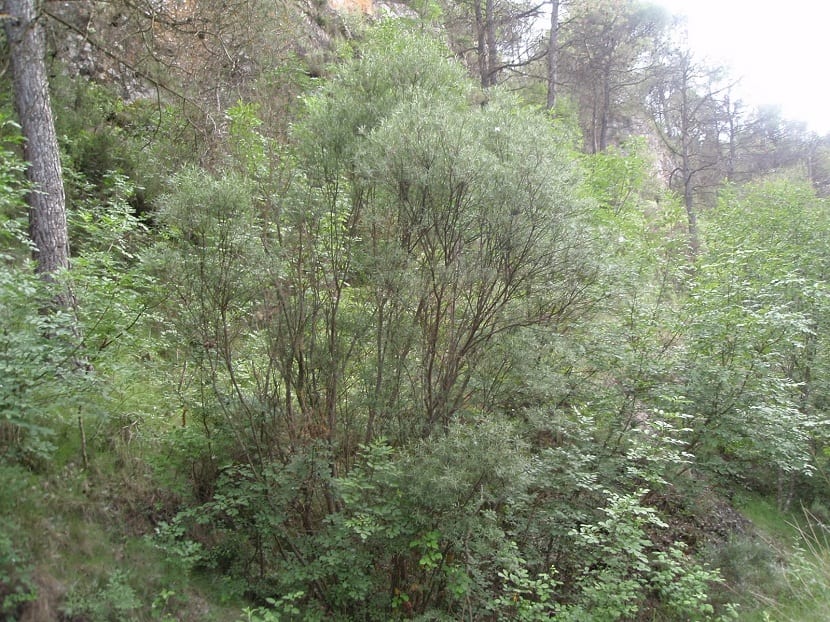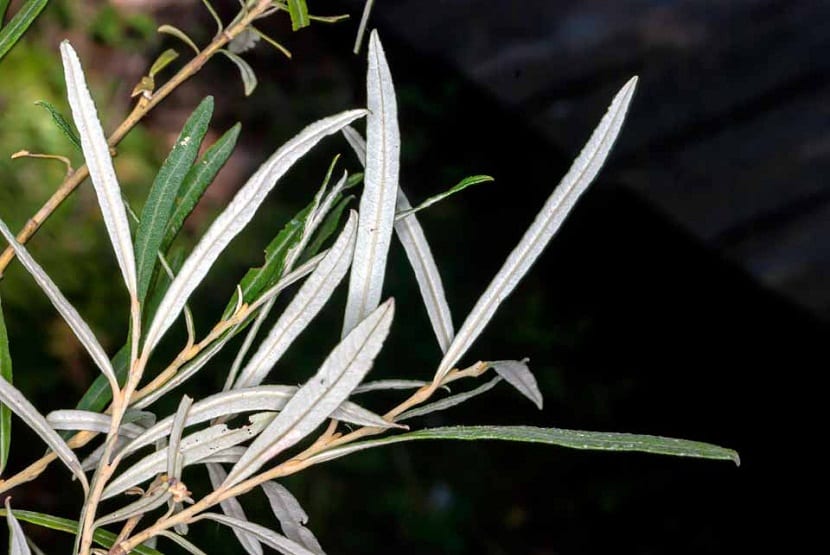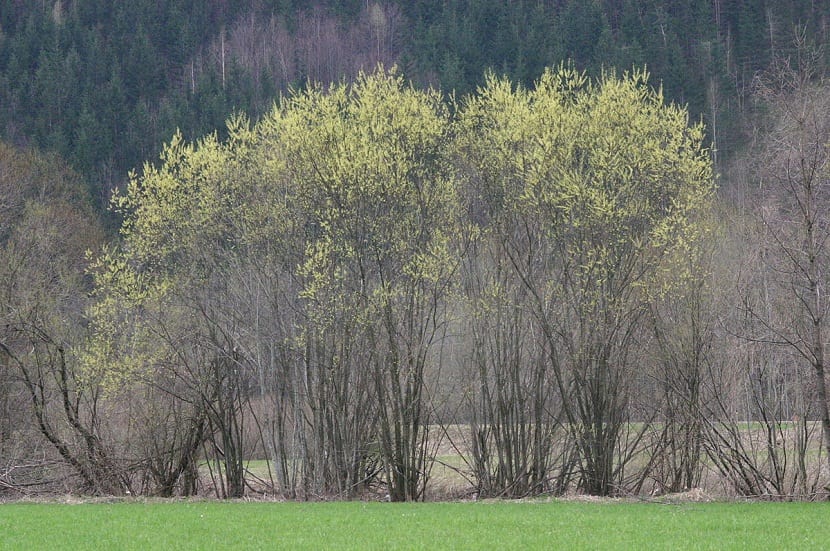
El Salix Eleagnos It is a kind of willow tree that grows on the stone-covered banks of rivers, in ravines and valleys that are humid, especially in soils that are limestone. The purple wicker can live between 200 and 1500 meters high, although in Sierra Nevada they have been found at about 2000 meters of altitude.
It is a tree that can grow up to six meters high, and it has quite abundant branches and a lot of flexibility that on certain occasions they can grow up to 12 meters high. The branches of this plant are brown, brown with shades of yellow, brown with shades of gray, or they can also be quite dark red and they are usually quite cracked in the older specimens.

Salix eleagnos characteristics
This is a tree that has simple leaves arranged alternately, deciduous and having a measurement of about 2 to 16 centimeters in length by about 3 to 10 millimeters in width.
They have a form that is linear or they can also be lanceolate leaves, with tips that are sharp and with a base that is shaped like a wedge, with a margin that is finely closed, scrambled on the underside, and glandular. When the leaves are mature, they have a dark green color on the upper part and have a dense whitish or gray hair on the underside.
Its flowers have their birth in rather long filaments that are called catkins. Its fruits are shaped like a capsule When it is ripe, it opens and then releases the seeds that are wrapped in a kind of cottony fabric that has the ability to be dispersed with the wind.
Farming
The perfect place to plant a purple wicker is the areas that have swampy watersIdeally, the land is quite close to a pond, a lake or near any body of water. These places provide the plant with the guarantee that it will not suffer problems due to lack of humidity. When planting this tree it is important to consider the system that has its root, in general what is the root system is closed. It can be sown bare-rooted during the first days of spring before germination or in the last days of fall after the leaves have fallen.
Care
When the tree is recently planted it is important to water it, since it needs to be constantly humid. For this it is important to water the plant once a week in the morning and then at night. When the tree has grown qualitatively, we must cover the earth with a little peat, and we will put a layer that will be about five to seven centimeters.
Plagues and diseases

Although this is an unpretentious tree, it does not mean that it can be left unattended in the face of any problem. The pests that most frequently attack this type of tree are generally the aphids, flower flies and willow moth. La caterpillar removal It is essential, since they can bite the leaves, leaving the tree unattractive for decoration. On the other hand, it is important to be attentive to the spring months, since this is the time when flower flies usually appear.
Uses
Thousands of years ago the branches of this tree are used for basketry, and even today this is a common practice that continues to be carried out. On the other hand, the tincture that is extracted from the bark when crushed can be used as a treatment for fever and cold symptoms. Purple wicker is a tree that is used very often by landscapers to decorate parks and gardens, so it is common that it is considered one of the most suitable trees to plant in urban parks.